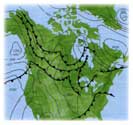|
|
 |
|
|
 |
|
|
The focus of this course is to provide the students with integrated experiences in different disciplines in natural science. Even though the disciplines are quite different, teaching them through a common phenomenological methodology allows for much more interdisciplinary movement in the thought processes than is commonly experienced in science classrooms where specialist protocols dictate the way in which the sciences are taught. Despite the fact that the accurate understanding of particular information about each science will be at the center of each block, the overall goal is to focus the students on the commonality of process by which things are learned rather than on the acquisition of information specific to a particular subject.
|
 |
|
 |
This block is designed to explore the polarities of cosmos and earth in many different situations. The earthly or centric forces have a signature of radiating from a center. Cosmic or peripheral forces manifest in peripheral forms that spherical, hollow or planar . The two signature of centric or peripheral can be found in many different life forms often alternating with each other as the organism matures. Wax modeling exercises of embryological stages and morphological features of mature organisms will be used to accompany the lectures. The concepts will also be illustrated with examples from projective geometry and the platonic forms.
|
|
 |
|
|
This block is given to familiarize students with the morphological language rudiments of periphery and center found in the many states of water. Drop morphology, ring vortices, vortex trains, inner surfaces, meanders in stream flow and the reciprocating vortex will be worked with through demonstration and group work exercises in the fundamentals of morphological problem solving and protocols.
|
 |
|
 |
|
 |
This block begins with a phenomenological analysis of the daily weather chart in the newspaper. High and low pressure cells are identified along with front lines and precipitation symbols. The mapping of the weather from the chart is the focus of the first week of the block. Once the symbology of the weather chart becomes familiar, more subtle observations can be made which involve looking at cloud types during the day, local and regional wind patterns, nature observations of the activity of animals and insects as indicators of weather, and analysis of satellite images of cloud patterns. This is finally all woven into a comprehensive image of the changing local weather during the duration of the block. The inclusion of planetary motion as a parameter of weather research once again introduces the concepts of periphery and center as a completion to the block.
|
|
 |



